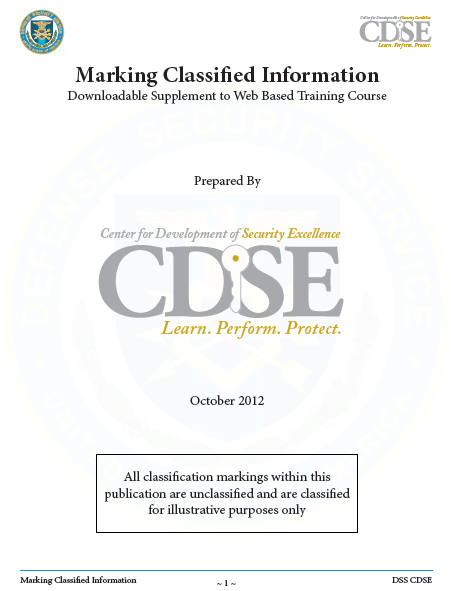The following guide to classification markings is part of online training courses provided by the Defense Security Service’s Center for Development of Security Excellence (CDSE) Security Training, Education and Professionalization Portal (STEPP).
Defense Security Service Center for Development of Security Excellence
- 43 pages
- October 2012
Marking is the principal way of letting holders of information know the specific protection requirements for that information. Markings and designations serve several purposes; specifically, they:
• Alert holders to the presence of classified information, information protected under the Freedom of Information Act (FOIA), and technical information with restrictions on its dissemination
• Identify, as specifically as possible, the exact information needing protection
• Indicate the level of classification and any other markings for control of the information
• Provide guidance on information sharing
• Provide guidance on downgrading (if any) and declassification
• Give information on the source(s) and reason(s) for classification or other restrictions
• Warn holders of special access, control, or safeguarding requirementsThis guide gives Department of Defense (DoD) staff and contractors an overview of the kinds of marking required to protect classified and unclassified controlled information that cannot be disseminated to all audiences. The guide offers an integrated approach to the major requirements for marking and control of information, briefly explaining the reasons for marking and providing examples of correctly marked information. To facilitate information sharing and declassification processes, whenever practicable a classified attachment, addendum, annex, enclosure, or similar section shall be used when classified information constitutes only a small portion of an otherwise unclassified document.
…


